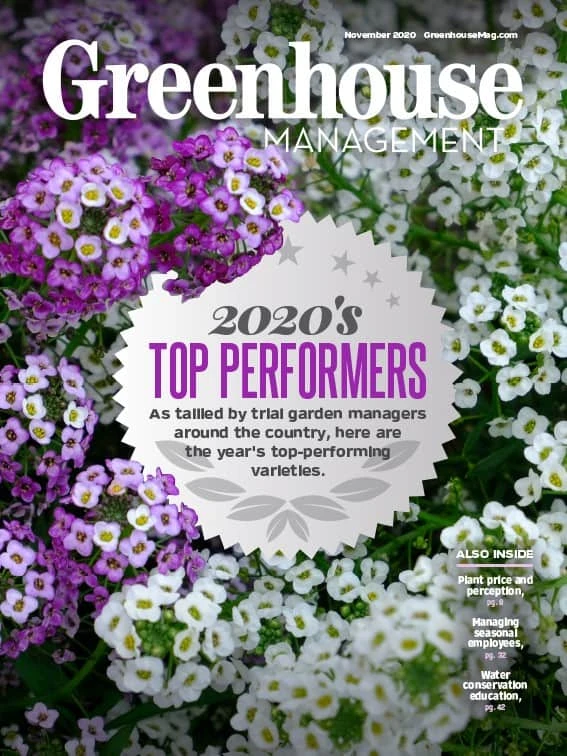

Based out of Dramm’s Canadian office, Peter Haakman specializes in designing custom irrigation systems for growers. According to Haakman, more and more growers are looking for an irrigation system that fits their greenhouse’s exact needs. A custom system can take anywhere from three to six weeks to design and install, depending on the parts and specifications.
Greenhouse Management: What are the advantages of doing drip irrigation versus mist?
Peter Haakman: It just depends on the application. If you’re looking to irrigate individual pots where you want to keep the plants dry, then you would want to use a drip system. If you are able to irrigate overhead and you just want to do a kind of rain application on benches, then you’d go with the misting system. Drip is very specific to the plant, so each plant would get the exact same amount of water as the plant beside it because it is an emitter-based system. With drip, you’re trying to equalize irrigation across the whole set of plants being grown.
GM: When deciding what system is right for your operations, what are some of the best questions to ask to understand what’s available and what the current standards are?
PH: Decisions are made based on what you’re trying to achieve, right? That’s in terms of plant growth, in terms of spacing, in terms of labor and access to plants. Are they growing on benches? Are they growing on the ground? Are they growing in separate pots or in pots with flats? Some things that have changed that people should know is a shift toward pressure-compensated emitters. In drip irrigation, in order for the emitters to kick in, you’re basically building up pressure in the whole system. And once they achieve a specific pressure, then the emitters all kick in at the same time, and then when you close the valve, they all shut off at the same time. That creates a more equal distribution of water across the plants. But also know that drip irrigation systems have been automatic for years, so it’s not something that hasn’t been done prior.
GM: Are irrigation systems typically easy to maintain over time?
PH: Maintenance, in terms of drip irrigation, needs to be done periodically. The good news is, it’s not that hard to do. We do equip our lines with flush valves, so it allows for a periodic, regular flush of the drip lines. And it’s a part of keeping the system clean. In my experience, doing this at the end of the growing season is something that growers tend to do well. At Dramm, we also supply Ozone water treatment, as well. That should take care of any biofilm that builds up.

Explore the November 2020 Issue
Check out more from this issue and find your next story to read.
Latest from Greenhouse Management
- Anthura acquires Bromelia assets from Corn. Bak in Netherlands
- Top 10 stories for National Poinsettia Day
- Langendoen Mechanical hosts open house to showcase new greenhouse build
- Conor Foy joins EHR's national sales team
- Pantone announces its 2026 Color of the Year
- Syngenta granted federal registration for Trefinti nematicide/fungicide in ornamental market
- A legacy of influence
- HILA 2025 video highlights: John Gaydos of Proven Winners





